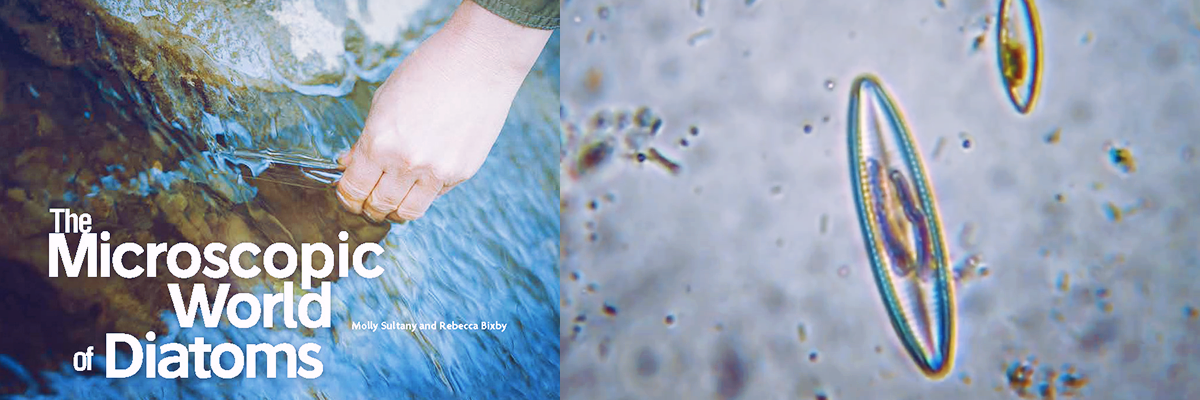NEWS
Becky Bixby Published in Science Teacher Journal

3 minutes
By
Natalie Rogers
The November 2016 issue of the National Science Teacher's Association (NSTA) journal The Science Teacher features an article co-authored by Becky Bixby, one of our Bioalgal Energy component co-leads. Together with Molly Sultany, a high school science teacher in Portland, Oregon, Becky emphasizes the importance of including diatoms in lessons for students in biology, chemistry, and environmental science. "The Microscopic World of Diatoms" takes Becky's real-life research of microscopic organisms that thrive in water, and Molly's expertise as a high school science teacher, and applies their knowledge and experiences to challenging and engaging activities in alignment with the Next Generation Science Standards for use in high school classrooms.
"The Microscopic World of Diatoms" is the culmination of an important 2-year collaboration that allowed 10th-grade chemistry students in Portland access to real-world science, field work, and equipment. Students set out to study water quality by studying diatoms in local streams. Working in groups, the students began by discussing various factors that may contribute to a change in water quality, then used an online simulation resource called SimRiver to get a better grip on how to collect, identify, and analyze diatoms. While using SimRiver to understand how factors like pollution can affect water quality, students began forming research questions by holding video chats with scientists across the country who study diatoms, including Becky. As a whole, the students merged their ideas to form three main research questions:
- How does reduced light availability caused by manufactured canopy cover (e.g., bridges) affect diatom communities that live on rocks?
- How do diatom communities in highly urbanized areas differ in the proportion of pollution-tolerant or low-pH-tolerant taxa compared to reference streams?
- How does logging along Oregon Coast streams influence water clarity, conductivity, and temperature, affecting diatom diversity and community composition?
With research questions in hand, students collected water samples from various sources, including backyard streams, ponds, and alpine rivers. Once back in the classroom, they analyzed the water samples—including pH, conductivity, and more—and followed a procedure to analyze and visualize the diatoms using light microscopes and a desktop scanning electron microscope. To answer their main research questions, students used diverse metrics to analyze their data based on the EPA rapid bioassessment protocol, which includes water quality class, biodiversity index, mobility of the diatoms, and sensitivity to pollution. Students constructed posters and held a classroom poster session to discuss findings and results, and eventually presented their work at local watershed conferences. In 2016, the students had the opportunity to present their work to Dr. Jane Goodall at the Oregon Youth Summit.
Congrats to Dr. Bixby on this project and publication! Read the article (PDF) here, or visit the NSTA website to purchase current & past issues of The Science Teacher.